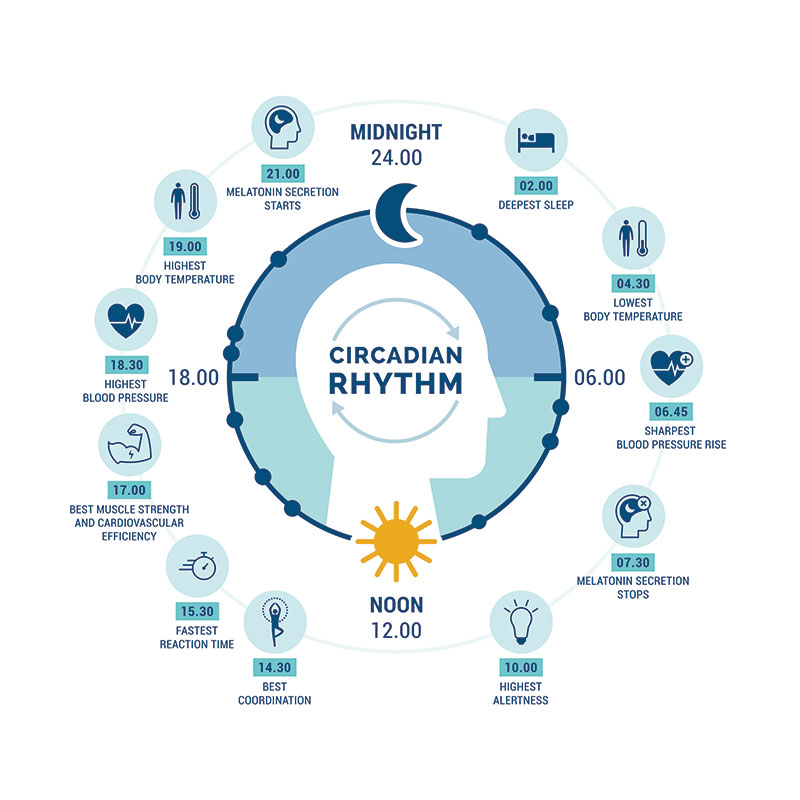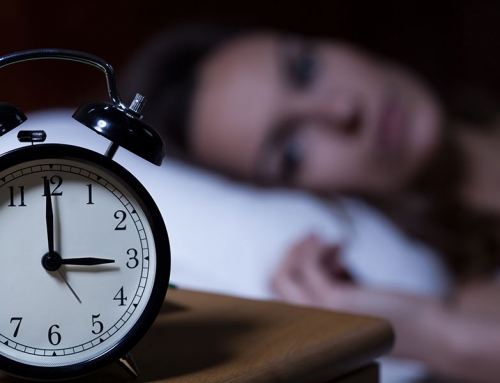Whether you’ve changed from a day shift to a night shift, or you’re travelling to a different time zone, occasionally sleep and wake times need to be adjusted. But how long this will take can vary, depending on factors like the reason for change, the individual, or the magnitude of the change. Generally, making lasting change in your sleeping pattern will take anywhere from a few days to 2-3 weeks, or even longer in special cases.
This article will explain how sleep cycles work, outline the length of time it might take you to change your current schedule, and discuss some tips that will help make the transition go as smoothly as possible.
Sleeping Patterns – What Are They?
Our bodies follow a natural cycle that helps determine sleep and wake times, called a circadian rhythm. We typically start feeling tired around the same time in the evening each night, and will wake up around the same time each morning (unless we are woken up earlier by an alarm, or have a particularly restless night).
Each person may have a slightly different pattern of sleep and wake times. Some may be ‘night owls,’ staying up later into the night than average and sleeping in later into the morning. And some may be ‘morning larks,’ who go to bed earlier than average and wake up bright and early too. Despite what some might tell you, neither one is better than the other.

Circadian rhythms are determined both by processes within the body and by environmental cues. For example, when there is less light at night, your body’s internal clock will tell your brain to make more melatonin (a hormone that causes drowsiness).
Because light and dark play an important role in regulating our sleeping patterns, many of the simple choices we make can also affect our rhythms. For instance, working late and staring at a computer screen at night can make it harder to fall asleep. Indeed, recent research has found that exposure to light from screens on smartphones, iPads, computers and similar devices at night can lead to less melatonin production and result in an inadvertent shifting of circadian rhythms, which can result in less sleep overall and potentially a range of other health issues.
Changing My Sleep Schedule
People may need to change the time that they fall asleep and wake up for a number of reasons. Perhaps you’ve recently changed jobs, or you’re picking up more shifts at work that aren’t on your usual schedule. If you’re a shift worker, check out these 9 tips to avoid Shift Work Sleep Disorder.
Alternatively, maybe you’re travelling to visit family across time zones and adjusting the clocks for daylight savings time. Or maybe those late night Netflix binging sessions are lasting just a little too long into the night.
The length of time it will take to change a habitual sleeping pattern will vary, and can depend on several related factors. Although there is no generic, ‘one size fits all’ answer, typically it can take from a few days to 3 weeks, depending on the person.
The magnitude of the change is a key determining factor. If you’re travelling across several different time zones, it may take more than a night or two to adjust to the change. If you’ve travelled from North America to Europe or Asia before, or vice versa, you know that upon your arrival you’re likely in store for several nights of falling asleep in the late afternoon (even as you struggle to stay up) and mornings of waking up at 3am.
Typically, the rule of thumb for jet lag is 1 day of adjustment time for each hour of difference. So, this means that if your internal body clock is 10 hours ‘behind’ or ‘ahead’ of your new destination, it will take somewhere between 1 to 2 weeks to completely adjust.
Of course, this will also vary somewhat from person to person. But certainly, if you’re going from LA to Chicago, it understandably won’t take you as long to adjust as when you go from LA to Hong Kong.
If you are changing work schedules, taking an earlier than usual morning class, or have to wake up earlier for another reason, it might take about a week or two to become fully acclimated to your new schedule. The transition involves an earlier wake up time for you, while also convincing your brain that an earlier sleep time is necessary to maintain the same amount of sleep overall. Although the adjustment does take time, know that it will occur, and you should find yourself progressively getting tired earlier on in the day.
For people with a diagnosed sleep condition or disorder, trying to change patterns of sleep and wakefulness can be very difficult. Adolescents with delayed sleep phase syndrome (DSPS), for example, who go to sleep extremely late and wake up very late, might only be able to successfully change their sleep and wake times consistently after 1 or 2 months of effort.
How to Help Adjust My Sleep Schedule
There are several steps you can take to make any sleep schedule change easier on yourself. Even if you’re not looking to make a sleep pattern change, many of these tips can help improve the amount and quality of your sleep.





